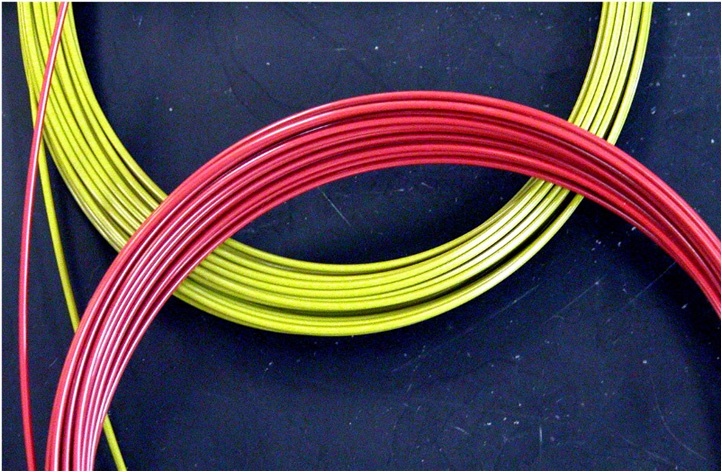PEEK (poly-ether-ether-ketone) tubing and fittings have become a standard part of most HPLC systems today. The flexibility and ease of cutting the tubing, coupled with the convenience of finger-tightened fittings make a combination that is hard to beat for most applications. In at least two previous articles ('PEEK Tubing – Benefits and Liabilities' and 'Peak Fitting Slippage'), I’ve discussed various aspects of PEEK products used in the HPLC environment.
As happens from time to time, I am corrected for spreading misinformation, and the present discussion should help to straighten out some misunderstandings about PEEK that I wrote about earlier. In particular was the reason for the incompatibility of PEEK with tetrahydrofuran (THF) and the chlorinated solvents, which I had attributed to the presence of residual monomer in the PEEK blend. My original sources were manufacturers of PEEK products, but apparently either they didn’t have their story straight or I remembered it incorrectly. Anyway, I want to correct some errors and share some additional information supplied by John Grasmeder of Victrex Polymer Solutions (www.victrex.com), the world’s largest manufacturer of PEEK polymers.
 Figure 1
Figure 1
Background
PEEK was invented at ICI in 1978 and Victrex has been manufacturing PEEK for more than 30 years. The PEEK polymer is made from the monomers hydroquinone and 4,4’-difluorobenzophenone with a reaction solvent of diphenylsulfone. The chemistry of the PEEK polymerization process and subsequent work-up results in a polymer which contains no residual monomers: therefore, no monomer is present in the product, which is then subsequently melt-processed. There are extremely low levels of residual solvent present in the polymer, which may be detectable with HPLC or LC-MS. However, PEEK’s purity and low extractables are renowned – this is one of the reasons why PEEK has been used for over 25 years in semiconductor manufacturing processes. There are, to Victrex’s knowledge, no variants of PEEK commercially available which contain residual monomers.
Processing
PEEK is one of the most thermally stable thermoplastics available, which enhances its ability to be manufactured into final products and for those be used in a wide variety of environments. The PEEK used for making tubing and fittings is a pelleted product that contains no antioxidants, process stabilizers, thermal stabilizers, UV stabilizers, flame retardants, or plasticizers. A trace of calcium stearate may be added to the pellets, primarily as an antistatic agent to prevent the pellets “sticking” to the hopper used to feed the pellets into the extruder used to make the final article.
Because individual manufacturers have proprietary processes, we don’t know the specifics of every possible product. However, Victrex has shared about their own extrusion processes for PEEK products. In their production of PEEK films and pipes, the pellets described above are used without any addition of lubricant, plasticizer, or other additives prior to extrusion.
Chemical Resistance
Because of its semi-crystalline nature, PEEK is resistant to a wide range of chemicals. The effect of any given chemical on PEEK is not only a function of the chemical species itself, but also of the time, temperature, and pressure of the exposure, and the presence of any internal or externally-applied stresses on the polymer during exposure – a complicated situation. For example, at sufficient temperature and pressure, water will quickly corrode stainless steel. Most chemical resistance data are generated at ambient pressure or sometimes at elevated temperatures, and at a variety of chemical concentrations, but rarely does it factor in pressure or stress. That said, the literature on the chemical resistance of PEEK does indeed advise against using it in the presence of THF and chlorinated solvents, the reason being that exposure to these solvents, under certain conditions, can lead to embrittlement.
Although Victrex has not investigated the fundamental basis for this embrittlement, it is known that it is not a consequence of monomer or lubricant extraction. They speculate that it is a result of solvent-induced crystallization: higher levels of crystallinity in the polymer will tend to result in a material which is stiffer, but shows a less ductile, more brittle behavior. There is research that supports the solvent-induced crystallization hypothesis [1,2]
Conclusions
So you can see that my prior statements about embrittlement resulting from monomer extraction from the PEEK polymer were not correct. I hope that you’ve learned as much as I have from this interesting information shared by experts in the field. PEEK is, and will continue to be my go-to product for HPLC tubing and fittings in most applications.
And finally, this is a good example of how those of you who are experts in a particular field can help to educate us all. Thanks, John Grasmeder and Victrex.
References
1. Cornelis & Kander, Proceedings SPE ANTEC ’96 (Society of Plastics Engineers, Annual Technical Conference), (1996) 1794-1797.
2. McPeak & Kander, Proceedings SPE ANTEC ’99, (1999) 1866-1870.
This blog article series is produced in collaboration with John Dolan, best known as one of the world’s foremost HPLC troubleshooting authorities. He is also known for his research with Lloyd Snyder, which resulted in more than 100 technical publications and three books. If you have any questions about this article send them to TechTips@sepscience.com




